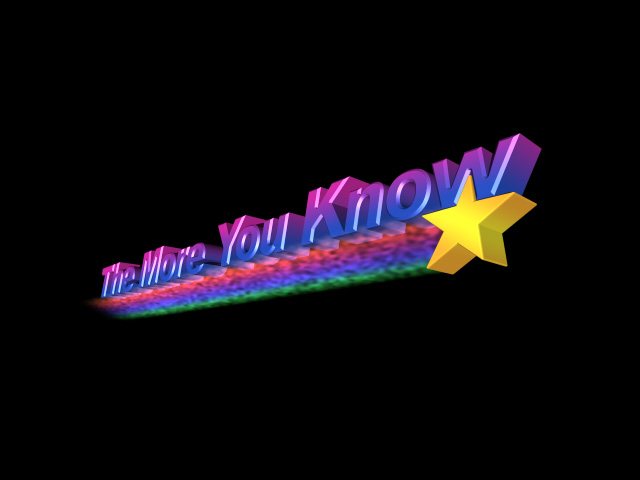[DAILY FACTS #2] The Solar System
 •
by
•
by Legendardisch
Welcome to a new Daily Facts, with this time
OUR SOLAR SYSTEM.

(Artist vision of the forming of the solar system)
1. The hottest planet in the solar system is not Mercury, but Venus due to the enormous green house effect.
2. The Asteroid Belt may contain many objects, but they are spread out over a huge area of space. This has allowed spacecraft to move through this region without hitting anything.
3. The first mission to the Kuiper Belt and beyond will fly by Pluto in July 2015. It’s called New Horizons and will survey Pluto, Charon and the other moons before heading out to study other Kuiper Belt Objects in the future.
4. Objects in the Oort Cloud are also referred to as Trans-Neptunian objects. This name also applies to objects in the Kuiper Belt.
5. Neptune was not known to the ancients: It is not visible to the naked eye and was first observed in 1846. Its position was determined using mathematical predictions. It was named after the Roman god of the sea.
6. Pieces of Mars have fallen to Earth: Scientists have found tiny traces of Martian atmosphere within meteorites violently ejected from Mars, then orbiting the solar system amongst galactic debris for millions of years, before crash landing on Earth. This allowed scientists to begin studying Mars prior to launching space missions.
7. There is an asteroid called 243 Ida that has its own moon
8. Ganymede is the largest moon in the Solar System. If it were orbiting the sun instead of Jupiter it wouldn't even be the smallest planet (Mercury is smaller).
9. Recently scientists discovered another ring around Saturn that can only be seen with infrared. It's so big that only a picture would do it justice.

10. Hyperion, one of Saturn's moons, is the largest non-spherical moon in the Solar System. If you think it looks spongy, you're right. It is half as dense as water and would actually float in a bathtub if it was big enough.

BONUS FACTS (Because its weekend!):
11. The definition of a planet and a moon is fuzzy: We all know of that famous International Astronomical Union vote in 2006 where Pluto was demoted from planethood into a newly created class called “dwarf planets.” But the definition drew controversy among some, who pointed out that no planet — dwarf or otherwise — perfectly clears the neighborhood in its orbit of asteroids, for example. Moons are considered to orbit around planets, but that doesn’t cover situations such as moons orbiting asteroids or double planets, for example. Goes to show you the Solar System requires more study to figure this out.
12. The planets are all on the same “plane” and orbit in the same direction : When considering the IAU’s definition of planets, we come up with eight: Mercury, Venus, Earth, Mars, Jupiter, Saturn, Uranus and Neptune. You’ll notice that these bodies tend to follow the same path in the sky (called the ecliptic) and that they orbit the Sun in the same direction. That supports the leading theory for the Solar System’s formation, which is that the planets and moons and Sun formed from a large gas and dust cloud that condensed and spun.
13. We’re nowhere near the center of the galaxy: We can measure vast distances across the universe by looking at things such as “standard candles” — a type of exploding stars that tend to have the same luminosity, which makes it easier to predict how far away they are from us. At any rate, looking at our neighborhood, we’ve been able to figure out we’re nowhere near the Milky Way galaxy’s center. We’re about 165 quadrillion miles away from the center supermassive black hole, NASA says, which is probably a good thing.
14. The Sun is hugely massive: Just how massive? 99.86% of the Solar System’s mass is in our local star, which goes to show you where the real heavyweight is. The Sun is made up of hydrogen and helium, which shows you that these gases are far more abundant in our neighborhood (and the Universe generally) than the rocks and metals we are more familiar with here on Earth.
15. We haven’t finished searching for life here: So we know for sure that life exists on Earth, but that doesn’t rule out a whole bunch of other places. Mars had water flowing on it in the ancient past, and has frozen water at its poles — making astrobiologists think it might be a good candidate. There also are a range of icy moons that could have oceans with life below the surfaces, such as Europa (at Jupiter) and Enceladus (at Saturn). There’s also the interesting world of Titan, which has “prebiotic chemistry” — chemistry that was a precursor to life — on its surface.
Suggest me tomorrows topic, and let me know in the comments below which fact amazed you!



Comments
Yay I love this 😃
hmm a next topic... The Mongol Empire
\o/
nice
Check this out, makes you think: http://www.spoofee.com/forums/attachments/off-topic-discussion-general-questions/1612d1246336329-how-big-you-compared-universe-spaceb.jpg
Nice article again! I like fact 7 about the asteroid which has its own moon. 🙂